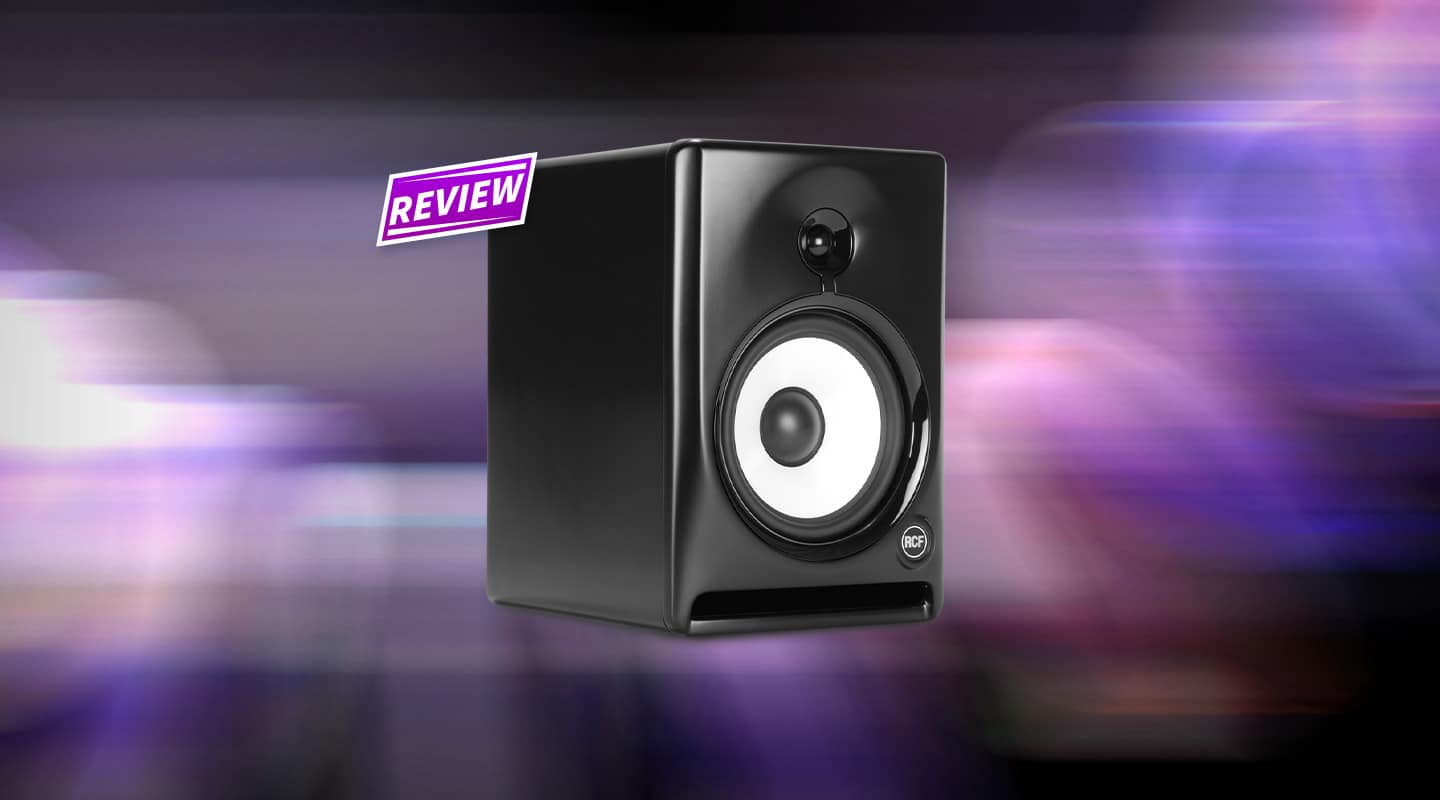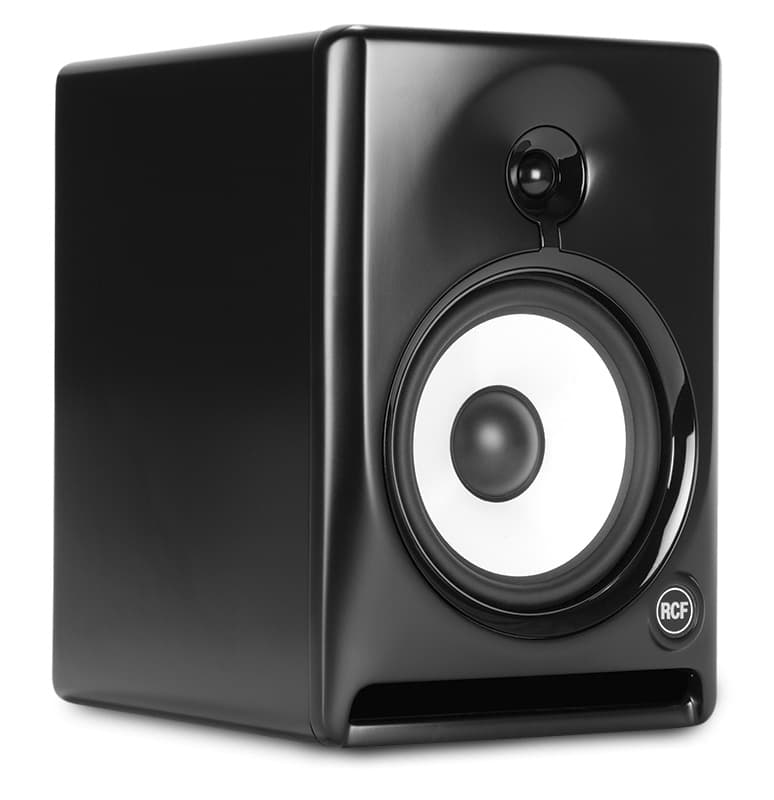
Review: RCF AYRA Monitor Speakers
RCF’s AYRA series come with throwback NS10 looks, solid construction, and a price to get you moving into the Italian stallion’s stable.
It’s probably safe to say RCF is the audio world’s favourite Italian speaker manufacturer. Best known in Australia for their popular range of live speakers they make a wide range of audio gear for applications ranging from domestic use to large-scale concerts. According to RCF, its recently released AYRA range of powered near-field speakers combines the company’s expertise in live speakers and hi-fi audio to create speakers that provide a ‘connection’ between these two areas. The result is a range of speakers aimed at the home studio/multimedia/gaming market. The series consists of three models and a matching sub, all available at very reasonable prices.
A LOOK THAT WON’T DATE
All three models combine active two-way designs with a strong family look that is distinctive in its old-yet-new colour scheme. I suspect the look is quite deliberately an update on the classic Yamaha NS10 with a black cabinet and white woofer cone. The AYRA series has reflection-busting rounded corners on the front panel and its sleek, smooth matt-black finish looks modern and stylish. MDF lurks below the lacquered surface, but it feels like strong plastic. The cabinets are resonance-free and weighty enough to give a solid, quality feel. Studio monitors don’t get knocked around like live gear but the surface feels like it would be quite resistant to scuffs and scratches. Though I couldn’t bring myself to test the hypothesis.
The smallest of the range is the AYRA 5 and, as its designation implies, it’s got a 5-inch composite fibreglass driver and a 1-inch soft dome neodymium tweeter mounted in a moulded waveguide. Coverage is quoted at 110 degrees horizontal and 70 degrees vertical. Power is supplied by newly-designed 35W+20W Class AB amplifiers, and the DSP includes a soft limiter, while thermal and RMS detection offer protection from damage. The AYRA 6 is the same but with a 6-inch woofer and 50W+25W amps while the AYRA 8 has an 8-inch driver and 80W+30W of power.
Connections are made on the rear panel and include balanced XLR or ¼-inch jack inputs and a single unbalanced RCA input. Controls are a volume knob and a high-frequency adjustment that switches between -2dB, -1dB, 0db and +1dB at an unlabelled frequency. This layout is simple enough for amateur users but comprehensive enough to allow a wide range of equipment to be connected. Missing is a low-frequency trim that can help reduce the bass build-up that commonly occurs when the speakers are placed with a wall close behind them. Cooling is by convection and even though there are no obvious heat sinks the cabinet only got slightly warm after being on all day. Voltage settings are manual, rather than the modern auto sensing types, but clear to see and lockable.

NEED TO KNOW
PRICE IS RIGHT
I’ve been trying the AYRA 5 and AYRA 8 versions and while I’ve had them they have received many favourable comments about their looks from customers, with those of a certain age picking the NS10 similarity straight away. I haven’t used an NS10 for some years, and I don’t miss them…beyond a certain nostalgia anyway. They were OK in the ’80s and they made a reasonable reference monitor at the time. The idea was if the woofer was jumping out of the cabinet on the kick drum and the tweeter was drawing blood from your ears then the ratio of high to low frequencies was about right. The high frequencies were tiring on the ears but the positive spin was they were bright enough to still hear the top end after the 18-hour sessions that were necessary to get a good studio rate in the ’80s.
The NS10 comparison really only applies to the speaker’s looks, although I’m sure RCF would be hoping their sales figures are as successful over as long a period of time. The AYRA series sound more modern and they are a good example of the gains in audio quality versus price in the last 20 years. The supplied frequency response curve is commendably flat and as a listening speaker they are pleasant and accurate enough for most purposes. Their horizontal coverage is wide and even, and you don’t need to be right on-axis to hear them clearly. If I compared them to the best quality (and much more expensive) near-field monitors they exhibit some graininess and blurred detail in the high frequencies. The low frequencies are quite full and reasonably tight, at least at low-medium volumes. There is some hollowness and lack of presence in the low-mids that you notice when comparing them to other speakers but again, for the price they’re pretty good.

STABLE SOUND
Comparing the AYRA 5 to the AYRA 8 illustrated how consistent the sound is across the range. The mid-high frequencies and coverage are the same with the only real difference being the AYRA 8 is more efficient and reaches down lower. The AYRA 5 is quoted at 55Hz–20kHz although there is no minus point mentioned. Maximum level is quoted as 106dB. The AYRA 8 is quoted at 45Hz-20kHz with 110dB the maximum. The AYRA 8 is a much bigger speaker though and the depth of 328mm could cause problems unless you have a deep shelf or large desk to put them on. In use I found either model is easy to work with as long as you didn’t push them too hard. The slightly hollow low-mids meant I had to be a little more careful not to try to compensate and end up with a boxy, mid-heavy sound when I played them back on other systems.
As you push for higher volumes the limiter becomes noticeable and the cabinet starts to load up. I found the low frequency response to be adequate for general recording and mixing even from the AYRA 5 but if you want more bass, or more volume, the matching sub might be needed. I didn’t get to try the sub as part of this review but it’s a ported design that uses a 10-inch composite fibreglass woofer with 250W of class AB amplifier. The AYRA 10 sub has a built-in crossover, a quoted frequency response of 35 – 130Hz, and it’s finished in the same surface as the other speakers in the range.
WIDE RANGE
RCF has designed the AYRA series to work in a wide variety of applications and this makes good sense. The line between reference monitors and general-purpose speakers is getting blurry and at the prices these sell for I would imagine they’ll find their way into project studios, computer gaming set-ups, home entertainment systems or even just as kick-ass computer speakers — you get a lot of style and sound for your money.
















RESPONSES